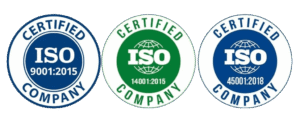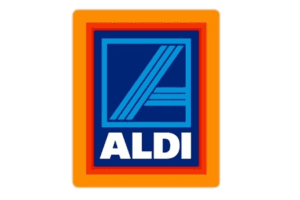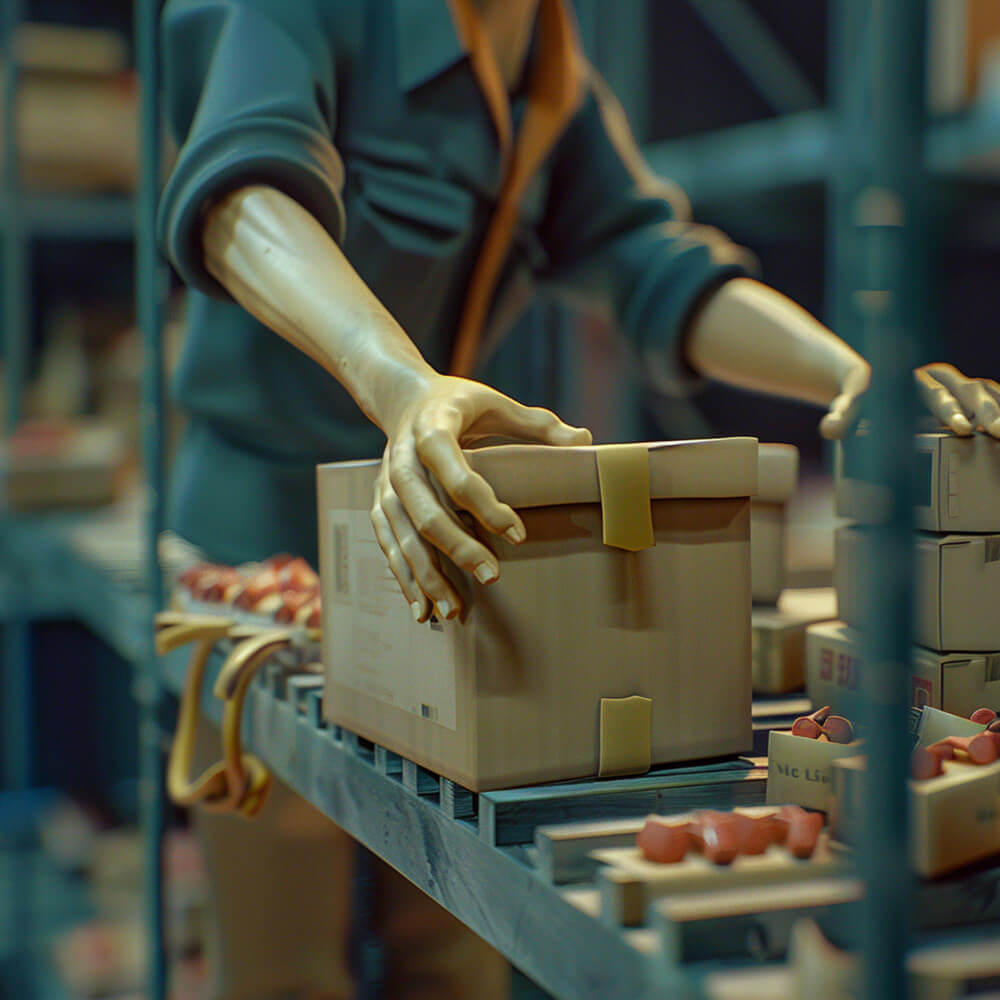Custom industrial packaging has become a vital part of how modern businesses protect their products, reputation, and bottom line. In fast-paced industries from manufacturing and logistics to food and retail even small packaging flaws can lead to costly damage, delayed deliveries, and disappointed customers. Standard packaging options often fail to meet the unique demands of different products, leaving companies struggling with waste, inefficiency, and compliance challenges. Add growing sustainability pressures and stricter regulations, and it’s clear why custom solutions are no longer a luxury. They’re a necessity.
This guide explores how custom industrial packaging transforms your supply chain performance. You’ll discover how tailored designs not only prevent product loss but also reduce material usage, cut freight costs, and meet environmental goals. We’ll walk through the types of packaging that work best for heavy, fragile, or temperature-sensitive goods; explore sustainable material choices; and share ways to calculate the true ROI of a custom solution.
By the end, you’ll understand how a well-engineered packaging strategy does more than protect your products. It protects your profit margins and strengthens your brand promise.
Why Custom Industrial Packaging Matters
Every product faces a unique journey — from the manufacturing floor to the hands of the customer — and along that path, countless variables threaten its condition. Custom industrial packaging is designed to meet those specific challenges head-on, offering protection, efficiency, and brand assurance in ways standard packaging simply can’t.
Performance: Protection and Transit Resilience
In industrial environments, the demands on packaging are relentless. Heavy loads, moisture, vibration, and stacking pressure can easily damage products during transport. Custom solutions are engineered to absorb these shocks, using the right combination of materials, dimensions, and cushioning systems. For example, products like CPET Trays or honeycomb wraps are tailored to protect delicate or temperature-sensitive goods. When packaging fits perfectly, there’s less wasted space, lower risk of movement, and a significant drop in product returns due to transit damage.
Operational Efficiency: Faster Packing, Lower Labour Costs
Beyond protection, the right packaging design can transform your operations. Custom-fit cartons, mailers, and industrial wraps streamline the packing process, reduce assembly time, and minimise the need for secondary materials. This efficiency cuts labour costs and enhances throughput — a vital advantage for companies scaling up production or handling high-volume shipments.
Branding and Compliance: Traceability and Responsibility
In today’s market, packaging also represents your brand’s ethics and professionalism. Compliance with local regulations on labeling, recyclability, and materials has become non-negotiable. Custom industrial packaging can integrate printed traceability codes, compliance markings, and branding elements directly onto the material. These touches not only meet legal requirements but also reinforce brand trust and environmental responsibility.
At Carewell Group, we help businesses design packaging that performs across every dimension — durable, efficient, and sustainable. Learn more about our Sustainability Solutions and how they align performance with planet-friendly practices.
Types of Custom Industrial Packaging
Every business has its own logistics rhythm — and the right packaging keeps that rhythm steady. Custom industrial packaging isn’t one-size-fits-all; it’s engineered around product weight, fragility, environmental exposure, and storage conditions. Below is a deep dive into the main categories, materials, and use cases that show how tailored packaging adds value from the warehouse to the customer.
Bulk Packaging (Pallet Wraps, Bins, and Large-Format Containers)
Bulk packaging forms the foundation of industrial transport. When shipping high volumes of goods, the priority is strength, stability, and space efficiency. Custom bulk packaging—like heavy-duty pallet wraps, collapsible bins, and reinforced containers—is designed to protect large shipments while keeping freight costs under control.
Use cases:
- Pallet wraps with enhanced stretch and tear resistance for securing stacked products during long-haul transport.
- Custom-sized bins for storing automotive parts or metal components that require secure handling.
- Collapsible bulk containers used in food manufacturing, reducing return freight costs when shipped empty.
Ideal industries: logistics, automotive, food processing, and manufacturing.
Carewell’s industrial wraps and films are engineered to improve stability while reducing material waste — ideal for companies seeking better cost efficiency and sustainability.
Protective Inserts and Cushioning (Foam, Honeycomb, CPET Trays)
Protective packaging is all about precision. A well-fitted insert prevents shock, vibration, and temperature swings from harming the product. Custom-cut foam inserts, honeycomb paperboard, and heat-resistant trays (like CPET trays) ensure every product arrives intact.
Use cases:
- Foam inserts that cradle sensitive electronics or medical devices during global transit.
- Honeycomb panels used as eco-friendly cushioning for fragile glassware or machinery parts.
- CPET trays for ready-meal applications, providing both durability and heat resistance for oven-to-table use.
Ideal industries: electronics, healthcare, ready-meal food production, and precision manufacturing.
This level of customization reduces product returns, eliminates overpacking, and shows customers that your brand takes care at every step.
Custom Boxes and Corrugated Solutions
Corrugated packaging remains a workhorse of industrial logistics, but customization turns it into a performance tool. By adjusting flute type, wall thickness, and print options, companies can create boxes that balance strength and weight — all while conveying a professional, branded look.
Use cases:
- Heavy-duty corrugated cartons designed for auto parts or industrial tools, with reinforced corners for impact protection.
- Multi-depth corrugated boxes for varying product sizes, reducing SKUs and storage space.
- Printed corrugated packaging that doubles as a marketing surface — ideal for B2B shipments where branding still matters.
Ideal industries: automotive, industrial equipment, retail distribution, and e-commerce fulfillment.
Custom corrugated solutions reduce waste, optimize pallet density, and support sustainability initiatives — especially when paired with recyclable or compostable materials.
Industrial Bags and Mailers
For lighter, flexible products, custom bags and mailers offer both protection and branding opportunities. Options range from tamper-proof poly mailers to compostable kraft bags, each tailored to the product’s size, fragility, and environmental impact goals.
Use cases:
- Poly mailers with custom branding for e-commerce and retail shipments.
- Tamper-proof bags for pharmaceuticals, electronics, or confidential documents.
- Recyclable kraft mailers and honeycomb mailers for companies moving toward sustainable packaging solutions.
Ideal industries: e-commerce, fashion, pharmaceuticals, and document handling.
At Carewell Group, our Poly Bags and Mailers are crafted to balance strength, flexibility, and visual appeal — designed for smooth fulfillment and reduced waste.
Specialty Packaging: Anti-Static, Temperature-Controlled, and Hazard-Safe
Certain products require precision beyond standard protection — they need control over temperature, static, or containment. Custom specialty packaging is built for those niche but critical needs.
Use cases:
- Anti-static packaging that prevents electrostatic discharge during electronics shipping.
- Temperature-controlled liners or insulated cartons used for chilled or frozen food logistics.
- Hazard-safe containers built to handle chemical or bio-sensitive materials while meeting compliance standards.
Ideal industries: electronics, pharmaceuticals, biotech, and cold-chain logistics.
These packaging types go beyond protection; they maintain product integrity and compliance from start to finish. Carewell’s Custom Solutions team helps design, prototype, and test packaging that meets strict industry and regulatory standards.
The Takeaway
From pallets to precision inserts, custom industrial packaging ensures every product is protected, every shipment is efficient, and every material choice supports sustainability goals. Whether you’re shipping heavy machinery, medical instruments, or perishable food, a custom approach means your packaging works as hard as your products do.
If you’re ready to optimise protection, speed, and compliance in your supply chain, explore how Carewell’s Packaging Solutions can be tailored to your operations.
Materials & Sustainability in Custom Industrial Packaging
The material behind custom industrial packaging defines more than just its look or feel — it shapes performance, sustainability, and total cost. As industries shift toward greener operations, the choice of packaging materials has become a strategic decision. Businesses now balance durability with recyclability, weight with strength, and cost with compliance.
Material Choices That Matter
Every product has its own packaging chemistry. Kraft paper and corrugated board are the go-to materials for their lightweight strength and recyclability. They’re perfect for cartons, mailers, and box liners — providing rigidity while remaining eco-conscious. For heavier or moisture-sensitive products, recycled plastic and composite films step in, offering superior barrier protection and longevity.
Then there’s the evolution of compostable liners and bio-based films, which are fast becoming mainstream in sectors like food and healthcare. They perform like traditional plastics but break down safely after use, helping companies meet their sustainability goals without sacrificing performance. Materials like APET and CPET also remain strong players — particularly for ready-meal trays and temperature-sensitive packaging — because they combine clarity, impact resistance, and recyclability in one form.
You can explore these materials in real-world applications through Carewell’s Sustainability page and CPET Tray products, where performance meets environmental care.
Recyclability and Lifecycle Considerations
The story of sustainability doesn’t end when the product leaves your warehouse. The afterlife of packaging — how easily it’s recycled, reused, or composted — determines its true impact. Choosing mono-material designs (packaging made from a single material type) makes recycling simpler and more cost-effective. Similarly, using water-based adhesives and non-toxic inks ensures that packaging doesn’t contaminate recycling streams.
Certifications such as FSC (Forest Stewardship Council) for paper products and ISO 14001 for environmental management provide proof of compliance and accountability. These standards not only appeal to eco-conscious buyers but also protect brands from future regulatory shifts.
Small Design Tweaks, Big Environmental Wins
Sustainability isn’t always about switching materials — sometimes it’s about smarter design. Reducing wall thickness, minimizing void fill, and rethinking dimensions can lower material use by up to 20% without compromising protection. Switching from plastic bubble wrap to honeycomb paper or using right-sized corrugated inserts can cut both costs and carbon footprint.
When engineered correctly, custom industrial packaging supports a circular economy — one where performance, presentation, and planet coexist. Carewell Group’s approach combines technical design with environmental foresight, helping businesses create packaging that’s efficient in transit, responsible in lifecycle, and ready for tomorrow’s regulations.
Discover how your next packaging redesign can strengthen your sustainability goals with our Custom Solutions and eco-innovation expertise.
Designing Custom Industrial Packaging for Manufacturability & Supply Chain Efficiency
Creating custom industrial packaging is more than choosing the right materials and dimensions — it’s about designing for manufacturability and supply chain efficiency. Packaging that performs flawlessly in theory can fail in practice if it isn’t aligned with production capabilities, supplier constraints, and logistics realities. The goal is to build solutions that protect products, streamline operations, and scale efficiently across every stage of your supply chain.
Collaborating with Suppliers and Managing MOQ Tradeoffs
A key step in manufacturability is close collaboration with suppliers. Understanding their production limits, material sourcing, and lead times helps avoid costly delays or overproduction. Minimum order quantities (MOQs) are often a critical consideration. While smaller batches offer flexibility and reduce inventory holding costs, larger MOQs can unlock lower per-unit prices and more consistent quality. Effective collaboration allows businesses to balance these tradeoffs, ensuring the packaging solution is both cost-effective and scalable.
Prototyping and Testing
No packaging design should go straight from concept to full production. Prototyping is essential to validate that your packaging protects products under real-world conditions. Techniques like drop tests, vibration simulations, and compression assessments replicate the stresses your products will face during storage, handling, and transport. For instance, fragile electronics might require anti-static foam inserts tested for repeated vibration cycles, while temperature-sensitive food packaging may be trialed in climate-controlled environments. This iterative process identifies weak points early, reducing returns and improving customer satisfaction.
Integration with Automation and Packaging Lines
In modern manufacturing, speed and consistency are crucial. Custom packaging must integrate seamlessly with automated packing lines, conveyors, and robotic systems. Factors such as box flap design, material flexibility, and adhesive application can dramatically affect packing speed and reliability. By designing with automation in mind, businesses reduce labour costs, minimise bottlenecks, and maintain high throughput without compromising product protection.
Optimising for the Entire Supply Chain
From supplier to end customer, packaging should facilitate efficiency at every step. Right-sized boxes reduce wasted space in pallets, lightweight inserts lower shipping costs, and stackable designs improve warehouse utilisation. When packaging is designed with both manufacturability and supply chain flow in mind, it becomes a strategic asset rather than just a protective shell.
Carewell Group works closely with clients to ensure every packaging solution meets these standards. Our Custom Solutions team combines engineering expertise with supply chain insight, delivering packaging that’s robust, scalable, and aligned with your operational goals.
By designing for manufacturability, testing rigorously, and planning for automated integration, your custom industrial packaging not only safeguards products but also enhances efficiency, reduces costs, and supports business growth.
Cost vs. Value: Making the Business Case for Custom Industrial Packaging
Investing in custom industrial packaging is often seen as a cost center, but the real picture tells a very different story. When designed strategically, custom packaging delivers measurable returns — from reduced product damage to operational efficiency — that quickly outweigh initial expenses. Understanding the full value requires looking beyond per-unit costs to the bigger financial picture.
Sample ROI Calculations
Consider a manufacturer shipping fragile electronics. Using standard packaging, they experience a 5% damage rate per month. With custom foam inserts and right-sized corrugated cartons, that rate drops to 1%. On a shipment of 10,000 units, this translates to 400 fewer replacements, saving tens of thousands in product and shipping costs.
Freight savings are another tangible benefit. Optimized box sizes and pallet configurations reduce unused space, lowering transportation costs per unit. For example, reducing wasted volume by just 10% on a monthly shipment of 50 pallets can save hundreds in freight alone. Combined with fewer returns, the cumulative savings rapidly offset the investment in custom packaging.
Hidden Savings
Custom packaging also uncovers less obvious efficiencies. Streamlined packing processes reduce labour time, allowing teams to focus on higher-value tasks. Fewer damaged shipments reduce administrative overhead associated with processing returns and handling customer complaints. In some industries, improved packaging can even lower insurance premiums or compliance risks, adding further indirect savings.
Pricing Models: Per Unit, Roll, Bulk
Packaging costs can be structured in several ways depending on volume and product type:
- Per Unit: Ideal for small runs or high-value items, giving precise control over cost per shipment.
- Roll: Common for films, bubble wrap, or stretch wraps, allowing flexible usage without excess waste.
- Bulk Orders: Best for high-volume operations, reducing unit cost but requiring careful inventory management to avoid overstocking.
When evaluating a custom packaging solution, it’s crucial to calculate both the direct and indirect savings. The combination of reduced damage, improved efficiency, and enhanced customer satisfaction often results in a strong ROI — making custom industrial packaging not just a protective tool, but a strategic investment.
Carewell Group helps businesses model these savings and design solutions that maximize value. Explore our Custom Solutions to see how tailored packaging can protect your products and strengthen your bottom line.
Implementation Playbook: Step-by-Step Guide to Custom Industrial Packaging
Rolling out custom industrial packaging effectively requires a structured approach. A well-planned implementation not only ensures your products are protected but also maximizes efficiency, reduces costs, and supports long-term supply chain goals. The process can be broken down into four critical phases: Assess, Prototype, Pilot, and Scale.
1. Assess
The first step is understanding your product, supply chain, and operational requirements. Identify key pain points: frequent transit damage, slow packing processes, high material waste, or compliance gaps. Collaborate with stakeholders across production, logistics, and procurement to collect data on shipment volumes, handling conditions, and customer feedback. This phase lays the foundation for designing packaging that solves real-world problems.
2. Prototype
Once requirements are clear, move to prototyping. Develop initial packaging designs tailored to your product dimensions, weight, fragility, and environmental conditions. Include protective inserts, cushioning, or specialized materials as needed. Test these prototypes under simulated conditions like drop tests, vibration, and compression to validate their performance. Iterative refinement at this stage ensures your solution balances protection, efficiency, and cost before committing to large production runs.
3. Pilot
After successful prototyping, pilot the packaging with a limited batch of shipments. Track key metrics such as damage rate, packing speed, and material cost per unit. This stage helps identify bottlenecks in handling, automation compatibility, or logistics efficiency. Feedback from warehouse teams, transport partners, and customers provides valuable insights to fine-tune the design before scaling.
4. Scale
With the pilot validated, move to full-scale production. Integrate the packaging solution across all relevant product lines and warehouses, ensuring consistency in material quality and operational processes. Continue monitoring KPIs such as:
- Damage Rate: Percentage of products arriving damaged.
- Packing Speed: Time required per unit or batch.
- Material Cost per Unit: Optimized without compromising protection.
Example Timeline
- Week 1–2: Assessment and data collection
- Week 3–4: Prototype design and initial testing
- Week 5–6: Pilot implementation with selected shipments
- Week 7–8: Evaluation, refinement, and scaling across operations
By following this structured playbook, businesses can implement custom industrial packaging with minimal disruption and maximum impact. Carewell Group supports clients through every phase — from assessment to full-scale deployment — ensuring packaging solutions are efficient, compliant, and tailored to your operational needs.
Explore our Custom Solutions to start your implementation journey and safeguard both products and profitability.
FAQs: Custom Industrial Packaging
1. What is custom industrial packaging and when should I choose it?
Custom industrial packaging is tailored to the specific size, weight, fragility, and handling requirements of your products. You should choose it when standard packaging fails to protect goods adequately, when efficiency and cost savings are priorities, or when branding, compliance, and sustainability considerations are critical for your business.
2. How does custom packaging reduce damage in transit?
By using materials and designs that match the product’s needs — such as foam inserts, honeycomb panels, or reinforced corrugated boxes — custom packaging absorbs shocks, prevents movement, and protects sensitive items during shipping. This reduces returns, replacements, and customer complaints.
3. Which materials are best for sustainable industrial packaging?
Sustainable options include kraft paper, corrugated board, recycled plastics, compostable liners, and APET/CPET trays. Mono-material designs, water-based adhesives, and recyclable inks further enhance recyclability while maintaining durability and protection.
4. What is the typical lead time and MOQ for custom packaging?
Lead times vary depending on design complexity and materials, usually ranging from 2–6 weeks. Minimum order quantities (MOQ) differ by supplier and material, but Carewell Group works to balance flexibility with cost-efficiency to meet both small and large-scale production needs.
5. How do I calculate ROI on a custom packaging solution?
ROI is measured by comparing costs against savings in damage reduction, freight efficiency, labor, and returns. For example, fewer damaged products and optimized freight usage often offset initial packaging investments within a few months.
6. Can custom industrial packaging integrate with automated packing lines?
Yes. Custom packaging can be designed for compatibility with conveyor systems, robotic automation, and high-speed packing lines, ensuring efficiency without compromising product protection or throughput.
7. How do you test packaging for transport resilience?
Common tests include drop simulations, vibration assessments, compression trials, and environmental stress testing. These ensure the packaging withstands handling, stacking, and shipping conditions while protecting the product inside.
8. Are there regulatory considerations for custom industrial packaging?
Yes. Packaging may need to comply with labeling, safety, and environmental regulations depending on the industry, such as food safety standards, hazardous material guidelines, or recycling requirements. Custom designs can integrate compliance directly into the packaging.
9. Can custom packaging help reduce material costs?
Absolutely. By optimizing dimensions, reducing void fill, and selecting efficient materials, custom packaging minimizes waste, lowers shipping costs, and can achieve up to 20% savings in material usage without compromising product protection.
10. What industries benefit most from custom industrial packaging?
Industries like electronics, food and beverage, medical devices, automotive, and e-commerce see the greatest gains. Any business shipping fragile, heavy, or temperature-sensitive products can benefit from tailored packaging solutions.
Protect Your Products, Cut Costs, and Boost Efficiency with Custom Industrial Packaging
Investing in custom industrial packaging ensures your products arrive safely, your operations run smoothly, and your brand stands out for quality and sustainability. From protective inserts to temperature-controlled solutions, tailored packaging solves real-world challenges while reducing damage, freight costs, and waste.
Take the next step toward smarter packaging — Request a Quote or schedule a Free Packaging Audit with Carewell Group today.
Location: Carewell Group Pty Ltd, Unit 27/191, McCredie Road, Smithfield, NSW 2164
Phone: +61 0477 123 699
Email: sales@carewellgroup.com.au | info@carewellgroup.com.au | logistics@carewellgroup.com.au










